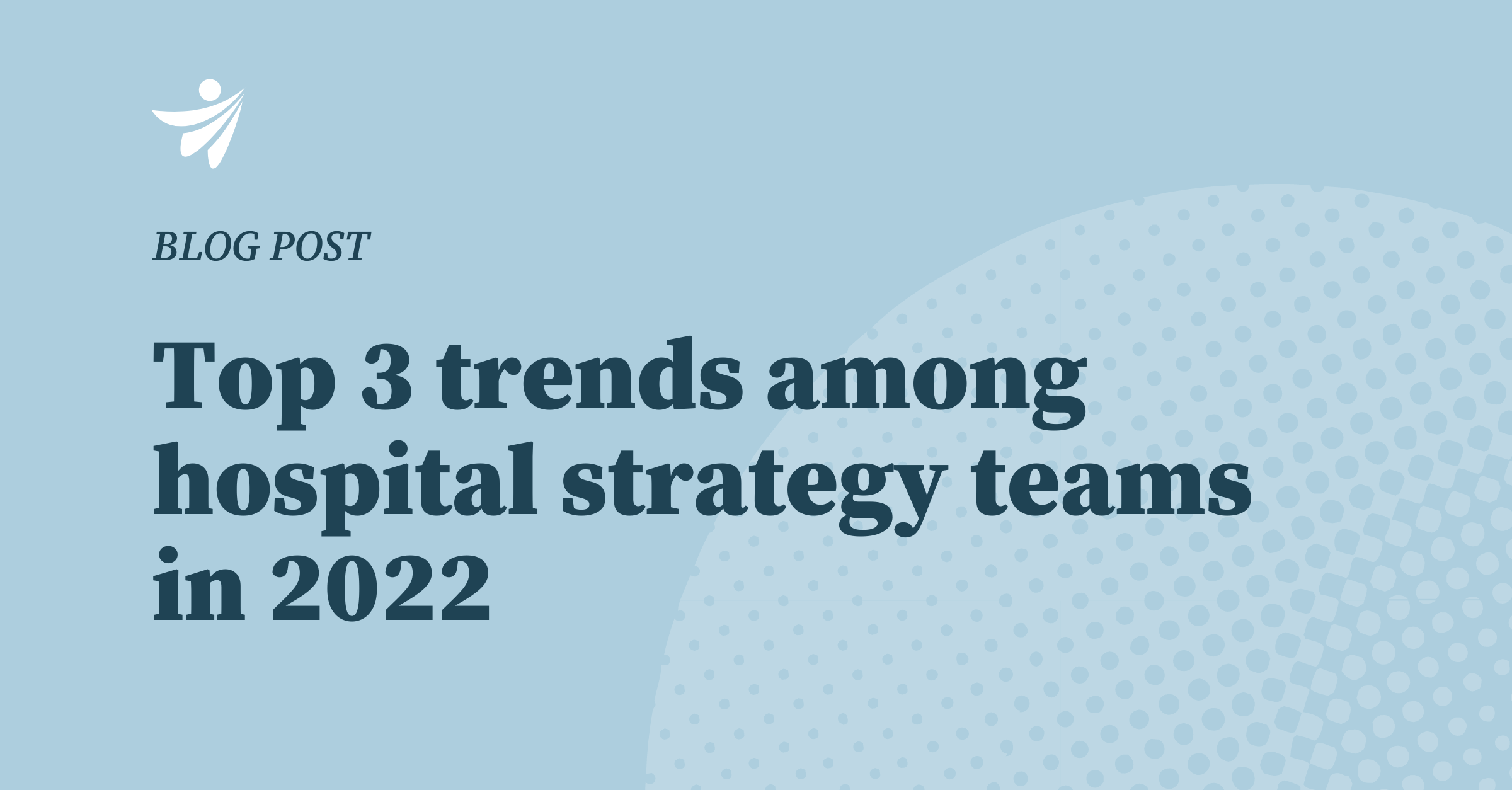The strategy function is critical for the future of hospitals and health systems. The hospital strategy team anticipates and plans for changing market dynamics, competitive pressures, consumer behaviors, technological advances, evolving regulations, and macro and micro factors that impact health. For many hospitals in 2020, strategy had to take a backseat. Instead of opening new facilities or running provider outreach campaigns to improve in-network referrals, strategy teams were pulled into critical action to meet the demands of a pandemic. In 2022 and beyond, hospital strategy leaders have an important opportunity to take a lead role in the industry’s transformation as their leadership looks to them to decipher key patterns and trends. From our recent discussions with dozens of chief strategy officers, a strong trend has emerged in the three areas they will prioritize for growth over the next 12-18 months. Many CSOs face limitations when it comes to having the right data at their fingertips to make decisions with confidence. In an increasingly competitive environment, they can no longer afford gaps in insight to answer questions such as: Paul Deeringer, SVP, Strategy & Emerging Business CSOs often have gaps in market intelligence and referral data, making it challenging to assess which providers will make the best partners. With significant volume shifting to ASC’s, hospitals now have even less complete data on patient journeys and struggle to answer business questions like: “Analytics are increasingly important to drive alignment. A decade or so ago, performing favorably on value-based arrangements was relatively straightforward. Today, the levers are not that straightforward—it requires transforming care, improving the outcomes of the community, and preventing a patient from landing in an inpatient bed in the first place. That’s where analytics play an important role.” Divya Paliwal, Chief Transformation Officer Having an end-to-end view of patient journeys is critical to identifying how to best engage and keep engaging your patients. Hospital strategy leaders should invest in longitudinal tracking to better understand patient needs and identify opportunities to better serve them. That level of insight will give them the precise answers to questions like: As they planned for investment in new technology and analytical capabilities, the above three areas emerged clearly as the top 3 priorities for Chief Strategy Officers and hospital strategy teams. What they will need to succeed is access to precise, fast, on-demand insights so they can act with confidence. To support strategy leaders as they navigate the ocean of complex questions they could be tackling, we have created a guide, “Top three technology investments for chief strategy officers”, to share how CSOs can address their nearer-term priorities while creating a strong foundation for the future of their organizations. Download the guide for hospital strategy leaders here. Strategy and business development leaders across the country leverage Clarify’s advanced analytics software to inform strategic decisions on market and service line expansion, physician alignment, and consumer demand. Request a demo to learn more. 
1. Hospital market share and service line growth
John Muir Health2. Physician alignment and recruitment
Horizon Blue Cross Blue Shield of New Jersey3. Identifying trends in consumer demand
- Author Details





